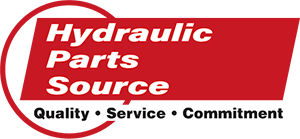Reducing Wear & Tear on Hydraulic Seals and Gaskets
Replacing seals and gaskets is an inevitable part of ensuring hydraulics systems are functioning optimally. The right seal goes a long way in reducing contamination in a hydraulic system.
There are steps you can take, however, to reduce wear and tear between replacements, and prolong the life of these integral components.
When planning prevention measures of any kind, it’s useful to determine and understand the outside factors influencing wear and tear in your system. Having a good understanding of why hydraulic seals fail helps you plan ways to avoid failure and prolong replacement cycles.In this article, we’ll start by looking at the environmental, ambient, and compatibility factors that influence seal wear and tear. Then, we’ll discuss pointers for proper seal and gasket installation and maintenance.
Sealing life can be extended by first reducing the impacts of each of the below factors, and following up with expert care.
Environmental Factors
Select seals and gaskets that meet the needs of outside forces. For example, your selections should consider these factors:- Friction
- Load and compression
- Pressure
Environmental Factor #1: Friction
Let’s discuss two kinds of friction: Excessive breakout friction, and excessive running friction.Excessive breakout friction can cause high hydraulic pressures to develop, and excessive running friction can cause heat and swelling. Important facts you should know are that breakout friction decreases with decreasing seal/gasket or o-ring hardness, and running friction decreases with increasing seal/gasket or o-ring hardness.
Environmental Factor #2: Load and Compression
The next consideration is load and compression, and the elastic recovery needed for seals to return to their original shape. The load tolerances of all the parts in contact with sealing applications should be considered in order to create a solid seal.Further, elastic recovery must be noted once a compressive force has been removed to avoid a compression set (which is the failure of the seal to return to its original shape.)
Environmental Factor #3: Pressure
Higher pressures, particularly those above 5000 psi, require specialty seals with a higher elastic modulus and harder material. If the part’s material cannot resist increasingly high pressure, it can quickly lead to wear and tear that can cause premature failure, leakage, and system contamination.Other options can be considered for O-ring selection, such as the use of back-up O-rings, or reducing the diametrical clearance gap.
Ambient Factors
Ambient conditions that should be examined as part of creating your hydraulic seal wear-and-tear prevention plan include these three items:- Temperature
- Contamination
- UV exposure
Here’s why it is important to consider these factors and their negative effects when choosing seals and gaskets:
- Temperature: Excessive heat will cause material to swell and harden, while colder temperatures can result in shrinkage and leakage
- Contamination: Contamination of hydraulic fluid, such as metal shavings, can damage seals and gaskets
- UV exposure: Rubber materials can break down, lose flexibility, fade, and disintegrate with ongoing UV exposure (from the sun, lamps, or even lasers)
Compatibility Factors
Regardless of knowledge of outside and ambient factors, if seals and gaskets are not chemically compatible, early wear and tear is eminent.Confirm product compatibility with seal and gasket materials to avoid this, and always choose materials that offer the best chemical resistance.
You will want to know which specific chemicals are present in your hydraulic system, and make sure to choose a design that protects against aggressive chemicals (such as strong acids or alkalis). A good material compatibility guide will aid in this decision.
Installation & Maintenance
Properly installing and maintaining hydraulic gaskets and seals is vital to prolonging their effectiveness. After selecting the proper gasket or seal that fits the environmental, ambient, and compatibility needs of the machinery, installation and maintenance procedure should be determined.Seals
Installation procedure can vary based on the nature of the seal’s application. However, a few preliminary tips are universally known to increase the life of the part after proper installation.Before installing:
- Have the right tools on hand that prevent denting or damage
- Make sure seals are cleaned with a lint-free cloth
- Protect seals from sharp corners and burrs
- Lubricate the seal and its sealing path
- Heat the seals to soften and improve elasticity
Gaskets
Procedures to properly install gaskets include:- Aligning flange faces and bolt holes and looking for irregularities
- Carefully inserting the gasket between the dry flanges
- Making sure the gasket is centered between the flanges
- Bringing the flanges together, ensuring the gasket is not pinched or damaged
In Conclusion
These maintenance and installation tips, in addition to proactive and well-planned selection of materials that meet the needs of friction, load, pressure, temperature, contamination, and UV exposure, will greatly reduce damage, and increase hydraulic system efficiency - and overall performance.By taking the time to consider these factors, as well as the compatibility of seal and gasket materials, and maintaining the function of the parts, wear and tear can be minimized between replacements. This will lead to increased cycles between component replacement and reduced chances of hydraulic system failure.
Contact us today to experience OE quality for a fraction of the time and cost by calling (888) 477-7278 or get a quote by emailing sales@hydparts.com.

